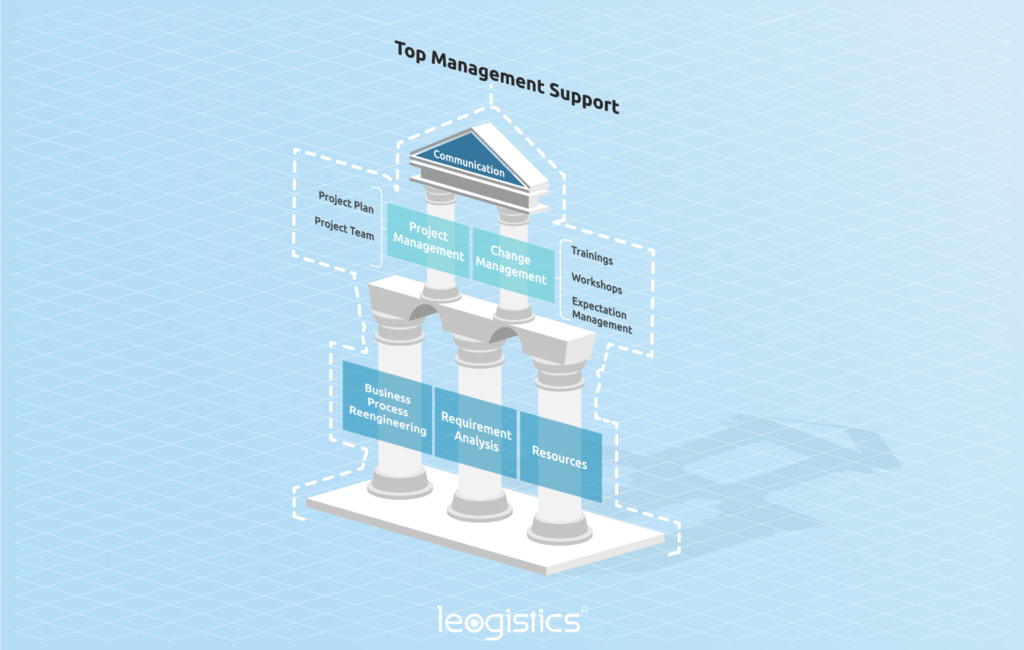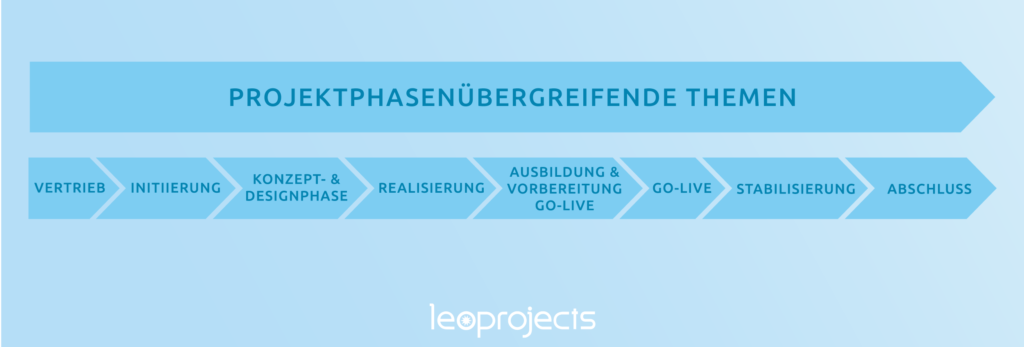Best practices for successful implementation projects
Over the past few months, we have dealt intensively with the challenges of implementing logistics standard software in this blog. Which deployment option is the right one under the given circumstances? What are the limits of SAP standard software and how can it be extended to meet individual requirements? How can you best prepare yourself to support the implementation? Today we would like to take up the ball again and look at the key factors that make for a successful implementation.
Obstacles
The implementation of an information system is often driven by strategic and operational objectives that lead to a competitive advantage. It is associated with improving operations, reporting and forecasting as well as increasing process efficiency through digitalization and automation.
However, the implementation process is often complex and goes along with organizational obstacles while multiple stakeholders with distinctive expectations are involved.
One obstacle refers to insufficient communication and awareness of project importance that can lead to priority problems e.g. in terms of lacking resources. Further, technical languages due to distinctive working backgrounds of project members can hinder smooth communication.
Furthermore, the fear of change with regards to affected roles and responsibilities can lead to user resistance. Nevertheless, the impact of change is often underestimated. Subsequently, user involvement and training are shifted to the end of an implementation project due to low priority or lacking resources.
Being aware of these challenges is important since they can impede a successful project.
Key factors for successful implementation
In order to overcome the described obstacles, there are certain factors to keep in mind throughout the different phases of an implementation.

Top management support and communication
The support, involvement and commitment of top management is a critical factor for a successful project to ensure the provision of required resources. The implementation should not be handled as just another IT project but a logistics business case that affects the organization and the way people work. The project importance and its benefits need to be communicated. Project members need to understand when project-related task will interfere in their day-to-day activities in order to prioritize and ensure critical functions are being performed. This needs to be clear from the beginning. Holistic and open communication is critical to ensure common understanding and to avoid frustration and resistance.
Further, responsibilities and expectations need to be communicated clearly, especially between external and internal project members. While consultants are responsible to pro-actively give advice to the customer by presenting the options and recommending the best way to go, internal project members need to actively take part on an equal level.
Project management and team composition
The establishment of a clear project plan contributes to a good project. It contains information regarding required resources, that need to be allocated by top management, the assignment of responsibilities, a time frame, project scope and milestones. Clearly defined objectives facilitate to keep track on the progress, to measure the performance and to derive corresponding actions in case of problems or deviations.
The team composition is equally essential for a successful project. It requires skilled project leadership to define priorities, to coordinate and communicate. Furthermore, a sufficient level of functional diversity is important in terms of team members such as key users, IT staff and external consultants that contribute their expertise.
Training and change management
In order to overcome the obstacles related to fear of change the project team should be proactive by integrating users early through workshops and trainings. This can reduce user resistance, increase their commitment and enable valuable input (user centricity).
However, early involvement needs to be handled carefully. Presenting too detailed and complex insights of a yet unfinished solution can create fear and user resistance. Therefore, starting early is a good way to manage change and to create common understanding but the training and involvement should be handled in digestible pieces with an appropriate level of details. Especially good expectation management with regards to certain stakeholders is important here as well as throughout the entire project.
Business Process Reengineering
The level of customization is an important decision to make since it has severe and long-term consequences. Implementing the standardized product and adapting the business processes to the system often requires willingness to change and rethink processes. On the contrary, a high level of customization in terms of modifying the source code of the product might fit the business processes well but will most probably lead to problems when it comes to system updates. A recommended way to reap the benefits of standardization and customization can be provided by avoiding core modifications and conducting customization on soft-coding level instead.
Requirements analysis
Another if not the essential key factor for a successful project refers to a thorough pre-analysis of requirements and objectives. Only if these are clear, appropriate actions can be derived and integrated. Hence, an adequate amount of resources is recommended to be spent on mapping current processes. In the leoprojects methodology, this is being reviewed by the project team during Concept and Design Phase. It ensures a basis for identifying the requirements on the new software as well as on the to-be process in order to reap actual improvements. Analyzing the as-is process by incorporating different stakeholders fosters the right selection of an appropriate software.

Conclusion
A thorough preparation that includes communicating project objectives and expected benefits, good expectation management and having key users spreading the word by early involvement can highly contribute to a positive and proactive atmosphere and change culture.
In the end, most comes down again to the criticality of a detailed, well-considered and prepared requirement and business process analysis which should be conducted by the implementing organization before the implementation phase.
If you have any questions about this or other topics in the blog, please contact blog@leogistics.com.
Kathrin Janshen
Consultant SAP Logistics



